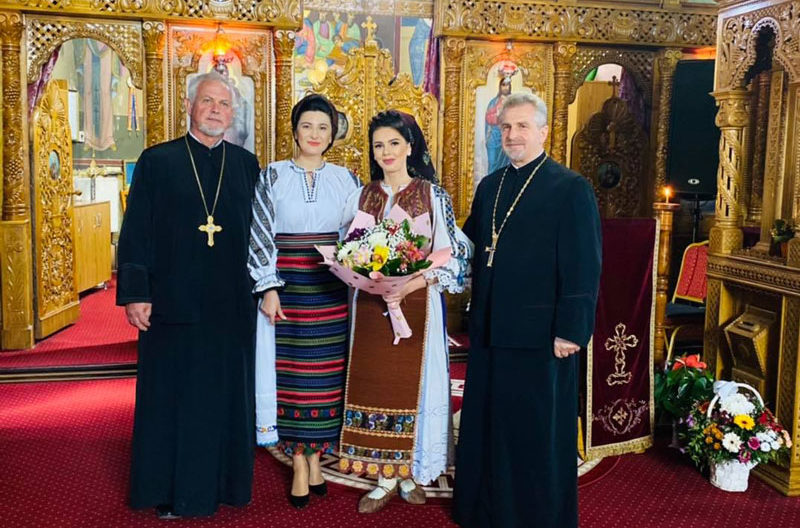

The Mediaeval Background of Self-Identification in Relation to the Filioque Controversy.Verena Krebs, Medieval Ethiopian Kingship, Craft, and Diplomacy with Latin Europe, Springer Nature, Cham 2021, xvii+308 p., eBook, ISBN: 978-4-0.From Paganism to Christianity and the Administrative-Ecclesiastical Integration of the Parishes on the Middle Valley of Târnava Mare in the Twelfth to Fourteenth Centuries.
 Bonnie Efros, Isabel Moreira (eds.), The Oxford Handbook of the Merovingian World, Oxford University Press, New York 2020, 1166 p. Ad Subsidium Terrae Sanctae: Military Religious Orders and the Cismarine Expansion of the Borders of Christianitas. Preliminary Approach Regarding Eastern and Western Christian Churches in Medieval Maramureș County. The Mobility of Iconographers and their Quest for Social Status Art and Signatures of Transylvanian Pre-Modern Greek-Orthodox Iconographers. Loader and Karl-Wilhelm Niebuhr (eds.), The Gospel of Matthew in its Historical and Theological Context, Papers from the International Conference in Moscow, September 24 to 28, 2018, WUNT 459, Mohr Siebeck, Tübingen 2021, 470 S., ISBN: 978-3-16-160104-0 Book Reviews / Buchrezensionen: Mikhail Seleznev, William R.G. Historical, Literary and Theological Readings from the Colloquium Ioanneum 2019 in Eisenach, WUNT 463, Mohr Siebeck, Tübingen 2021, 386 S., ISBN: 978-3-1610006-7 Koester (eds.), Signs und Discourses in John 5 and 6. The analysis of pilgrimages points to new forms of blending of music and ritual, outside established institutional frameworks, as well as to changing notions of pilgrimage, movement, religious practice and piety. Music is used as a barrier and immaterial border to the ritual space, while in its interior it is better suited for the emotional control and the proper management of pilgrims.
Bonnie Efros, Isabel Moreira (eds.), The Oxford Handbook of the Merovingian World, Oxford University Press, New York 2020, 1166 p. Ad Subsidium Terrae Sanctae: Military Religious Orders and the Cismarine Expansion of the Borders of Christianitas. Preliminary Approach Regarding Eastern and Western Christian Churches in Medieval Maramureș County. The Mobility of Iconographers and their Quest for Social Status Art and Signatures of Transylvanian Pre-Modern Greek-Orthodox Iconographers. Loader and Karl-Wilhelm Niebuhr (eds.), The Gospel of Matthew in its Historical and Theological Context, Papers from the International Conference in Moscow, September 24 to 28, 2018, WUNT 459, Mohr Siebeck, Tübingen 2021, 470 S., ISBN: 978-3-16-160104-0 Book Reviews / Buchrezensionen: Mikhail Seleznev, William R.G. Historical, Literary and Theological Readings from the Colloquium Ioanneum 2019 in Eisenach, WUNT 463, Mohr Siebeck, Tübingen 2021, 386 S., ISBN: 978-3-1610006-7 Koester (eds.), Signs und Discourses in John 5 and 6. The analysis of pilgrimages points to new forms of blending of music and ritual, outside established institutional frameworks, as well as to changing notions of pilgrimage, movement, religious practice and piety. Music is used as a barrier and immaterial border to the ritual space, while in its interior it is better suited for the emotional control and the proper management of pilgrims. 
The focus is on the relationship between music, ritual, the sacred space of the pilgrimage and the public space. This paper offers an ethnographic description of a pilgrimage. Apart from the pilgrimages to well-known destinations (Jerusalem, Rome, etc.) organized by the Romanian Patriarchy’s Pilgrimage Bureau, a separate category is the improvised, hybrid pilgrimages, both religious and touristic, organized by individuals using hired minibuses. More than 20 years after the fall of the Communist regime, we are witnessing the unprecedented development of religious pilgrimage in Romania, a country where, according to the latest census, 84% of the population self-identifies as Orthodox Christian.







 0 kommentar(er)
0 kommentar(er)
